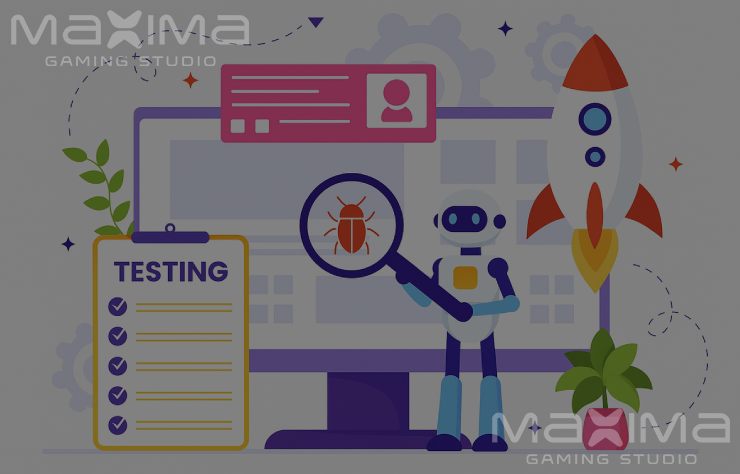 August 18, 2025
August 18, 2025
Future of AI in Game Testing and Bug Detection
Game development has become more complex than ever. With massive open worlds, intricate multiplayer mechanics, and thousands of possible interactions, ensuring a bug-free, seamless experience is a challenge. Traditionally, human testers have played a major role, but with the rise of Artificial Intelligence (AI), the future of game testing and bug detection is about to transform.
Why Testing Is So Crucial in Gaming
- A single bug can break immersion for players.
- Glitches in multiplayer or competitive games can lead to frustration and unfair advantages.
- Launching a buggy game often results in negative reviews, refunds, and lost trust.
That’s why testing is as critical as development itself — and why AI is becoming the new game-changer.
How AI Is Transforming Game Testing
1. Automated Playtesting
- AI bots can simulate millions of playthroughs much faster than humans.
- They explore unintended paths, exploits, and loopholes in the game design.
- Example: Testing if a player can break the physics engine by stacking items unnaturally.
2. Predictive Bug Detection
- Machine learning models can predict bugs before they occur, by analyzing patterns in past code errors.
- AI can flag risky code changes in real time, reducing the chances of critical crashes.
3. Faster Regression Testing
- Every time developers add a feature, it risks breaking older ones.
- AI can automatically retest previous builds to ensure nothing gets accidentally broken.
4. AI-Driven Visual Testing
- Detects graphical glitches, texture misalignments, or missing assets automatically.
- Goes beyond code and checks the visual polish of a game.
5. Bug Prioritization
- AI systems can rank bugs based on severity, frequency, and impact on players.
- Saves developers from wasting time fixing low-priority issues first.
Future Possibilities
- Self-Healing Games: Imagine AI detecting a bug in real time and automatically applying a fix during gameplay.
- Adaptive Testing: AI could simulate real-world network conditions (lag, packet loss, etc.) to test multiplayer reliability.
- AI-Powered User Behavior Simulation: Instead of random testing, AI will mimic how real players explore, cheat, or even “speedrun” games.
- Continuous Testing Pipelines: Games in development will be constantly tested by AI, ensuring fewer last-minute surprises at launch.
Benefits of AI in Game Testing
- Faster bug detection: saves months of QA time.
- Lower costs: fewer human hours needed.
- Smarter coverage: tests scenarios humans may overlook.
- Higher quality games: fewer glitches mean better player experiences.
Challenges to Overcome
- False Positives: AI might flag harmless behaviors as bugs.
- Complexity of Creative Testing: Some aspects (like fun factor or narrative flow) still need human judgment.
- Training Data Dependence: AI models need large, high-quality datasets to work effectively.
Final Thoughts
The future of AI in game testing and bug detection is bright. While human testers will always play a role in evaluating creativity, storytelling, and fun, AI will become the ultimate debugging partner — fast, efficient, and always on.
For developers, adopting AI-powered testing means fewer launch-day disasters, happier players, and stronger reputations in a highly competitive gaming industry.
The next big game release you play might just have been tested and polished by AI.


